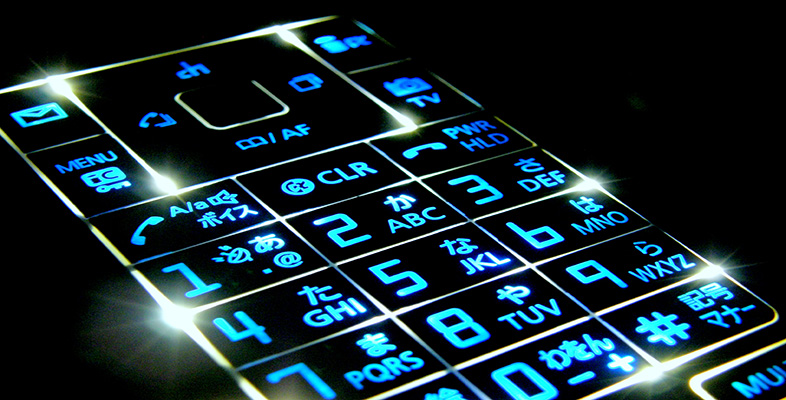2 Elements of an optical-fibre link
2.1 Light sources and detectors
The basic building blocks of an optical-fibre link are the light source, the fibre and the detector (Figure 1).

There are broadly speaking two categories of device used as light sources: light-emitting diodes (LEDs) and laser diodes. In general terms, LEDs are cheaper and easier to use, but have inferior performance compared to laser diodes.
The output from an LED differs from that of a laser diode as it is possible to couple more light power from a laser diode than from an LED to an optical fibre, and the spectral linewidth of an LED is much broader than that of a laser diode.
The lower power coupling from an LED comes partly from the fact that LEDs generally emit lower light power than laser diodes (the output from an LED is typically no more than −10 dBm), but also because the light from an LED spreads into a broader beam than the light from a laser diode. This latter point – the broader beam – means in particular that it is not possible to couple light from an LED very efficiently into a single-mode fibre, and in practice LEDs are only used with multimode fibre.
Single-mode laser diodes, can have spectral widths of 10 MHz or less. Narrow spectral width is particularly important at high signalling rates and in dense wavelength division multiplexed (DWDM) systems, so single-mode laser diodes are used in these systems. But there are further considerations that come into play to ensure a narrow spectrum – in particular, the mechanism used to modulate the light is important.
'Single-mode’, as used in ‘single-mode laser diode’, refers to a characteristic of the way in which the laser operates and of the resulting output spectrum. It does not have the same meaning as ‘single-mode’ as used in ‘single-mode fibre’.
The original – and cheapest – way to modulate a laser (or an LED) is to vary the electrical supply to the device. Modulation of an LED by a digital signal is done by switching the electrical current supplying the device on and off. Laser diodes can be modulated in a similar way, but for operation at high rates it is better not to switch the laser off completely so that the modulation is strictly ASK (amplitude shift keying) rather than OOK (on-off keying). The extent to which the laser goes off is expressed by the extinction ratio, re, defined by:

where P1 is the high optical power level and P0 is the low optical power level.
Activity 1
What is the extinction ratio: (a) if the low power is half the high power, and (b) if the light is switched completely off (i.e. true OOK)? If all other things are equal, which would give the better performance: high or low extinction ratio?
Answer
(a) If P0 is half P1 then re=2
(b) If P0 is zero then the extinction ratio is infinite.
The higher the extinction ratio the greater the distinction between the two signalling states, so high extinction ratio is better (all other things being equal).
The problem with modulating a laser diode by varying the electrical current supply (a technique known as direct modulation) is that the physics of laser diodes is such that the output wavelength varies with the electrical current. So as the electrical current is switched from high to low, and vice versa, the output wavelength also varies. This effect is called chirp, and results in an increase in the spectral width of the laser output. Chirp can be avoided by running the laser continuously at a constant high level (referred to as continuous wave, cw, operation), and modulating with a device that in some way attenuates the transmitted light under the (electrical) control of the modulating signal. This approach to modulation is described as external modulation. (Sometimes in practice the ‘external’ modulator might be physically integrated with the laser diode.) An additional advantage of external modulation is that it can allow the use of higher extinction ratios.
A further refinement in the development of lasers in recent years is that it is now possible to buy tuneable lasers: lasers for which the wavelength can be varied under electrical control. Tuneable lasers are useful in wavelength division multiplexed systems and in optical networks, as will be discussed later.
The detector is a semiconductor device known as a photodiode which provides an electrical current output which is proportional to the intensity of light falling on it. That is all you need to know about detectors for the purposes of this course, except perhaps to note that the speed at which a photodiode can react to changes in the light intensity is sometimes the factor that limits the maximum signalling rate over an optical-fibre link, but that recent developments in the technology have increased the speed at which photodiodes can operate.
SAQ 2
Optical-fibre transmission systems in the core network (between cities, international links, etc.) now invariably use lasers as the light source, but most optical-fibre systems in LANs use LEDs. Why do you think this is?
Answer
Transmission in the core network can make use of high signalling rates and needs to transmit over long distances, so the systems benefit from the power and modulation speed possible with lasers. LANs, on the other hand, generally need only short-distance transmission and don't need the speed over long distances that only lasers can deliver. The lower cost of LEDs is therefore more economical for LANs.
